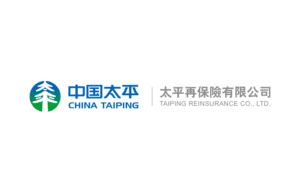Reinsurance consolidation more likely than Class of 2023/2024: AM Best

“We do not expect a new class of global reinsurers to emerge anytime soon,” rating agency AM Best has said in a recent report on the sector, seeing a greater chance of consolidation than any Class of 2023 or 2024 wave of new reinsurance companies being launched.
This is despite factors pointing to this being an opportune moment for new reinsurers, as there are “historically high rates, depleted capital buffers, and primary writers unhappy with the risk retention levels they are being forced to hold,” AM Best explained.
One of the key reasons behind this, according to AM Best, is that rates are increasing due to “sustained technical underperformance”, which might make the sector less attractive to investors at this time.
Later in the report, AM Best states that, “Potential start-ups face skepticism from investors in a segment where risk premium is elevated, given the volatile results from recent years.”
Adding that, because of this, “Consolidation is more likely than the emergence of a Class of 2023/24.
“Caution in deploying capital and underwriting discipline are critical for the medium to long term, but market participants are under pressure to innovate, expand their presence, and assert their role in an evolving economy in which today’s emerging risks will soon become the dominant ones.”
The rating agency also notes, in the report, that “investor fatigue is real” and equally apportions this to both the traditional side of reinsurance as much as to insurance-linked securities.
The current hard cycle in the reinsurance market is different to previous ones, AM Best concludes, making the establishment of new companies less attractive.
In the last few years, the trade press has been awash with stories about industry luminaries seeking to launch new reinsurance ventures, but very few have come to fruition and some remain business plans that continue to do the rounds of private equity desks.
In discussions with some of those investors, one of the problems has been a lack of differentiation, in the plans of proposed reinsurance start-ups over the last few years.
Investors are looking for companies willing to shake-up the status-quo of the reinsurance industry, rather than just emulate the Bermuda model of a new reinsurer that starts off property cat heavy, then slowly morphs to a mid-sized specialty lines player.
A number of our investor contacts in the private equity world have also expressed some concern that, in order to gain traction in a market environment where the largest reinsurers continue to hold significant influence, any smaller start-up will need to be incredibly competitive on price, unless they have something differentiating to offer.
Meaning business plans need to have some sort of a vision for generating a lower cost-of-capital, or risk being seen as a small company that will have to discount pricing just to get off the line, or focus on potentially volatile areas such as providing capacity for ILW’s.
But the above has been a problem for start-ups forever.
It’s equally a challenge in the ILS market, where new ILS funds are often only able to build portfolios by targeting specific areas of the market and generally being seen as a source of cheap capacity by brokers.
The ILS market has also been blamed for holding back the emergence of a “Class of” reinsurance start-ups in the past, as the expansion of alternative capital in reinsurance meant that opportunities were seen as more limited and competition higher for traditional equity backed reinsurers.
But, AM Best says that, “This time, the presence of third-party capital isn’t entirely responsible for the lack of new entrants to the global reinsurance segment.”
Adding that, now, “ILS is an integral part of the market,” and that “The absence of a meaningful influx of capital is not specific to the traditional sector but rather is shared with the ILS side.”
AM Best continues to explain that, “The prospects for an influx of net capital sufficient to translate into a Class of 2023 are limited while these conditions hold.
“Investors will likely demand a strong commitment to underwriting discipline, as well as flexibility to adjust to changing conditions in the business cycle. Well established, diversified companies with a proven track record are better positioned to succeed in this effort than start-ups pressured to meet top-line targets.”
All of which suggests that, with the ILS market growing on the catastrophe bond side, but so far only really replenishing its deployable capital on the private ILS and collateralized reinsurance side, the overall reinsurance industry is not going to suddenly return to a state where there is a glut of capital, or over-capacity.
Which should help reinsurers in sustaining rates through 2024, even if the rest of this year sees only average loss experience.
Summing up, AM Best said, “AM Best believes that despite the severe decline in shareholders’ equity due to unrealized investment losses in 2022, global reinsurers remain well capitalized.
“The argument that a shortage of capacity will lead to new company formations is debatable as available capital and a willingness to deploy it have become disjointed.
“After several years of disappointing financial results, reinsurers have become much more cautious about deploying their capital.
“A prudent approach is likely to preserve underwriting discipline for a longer period than in previous cycles.”
There are of course plenty of business plans doing the rounds and being reported, some of which are rehashes of plans first surfaced a year and even two years ago.
What actually comes to fruition remains to be seen.
While it looks almost certain that anything that does will have a relatively short-term horizon before it aims to get sold to an established player, providing the exit and multiples private equity typically requires.







